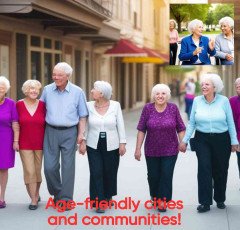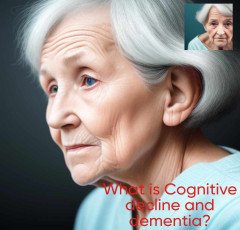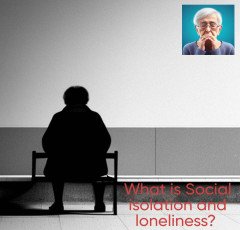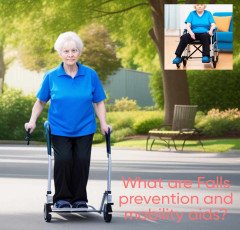
Age-Friendly Cities And Communities

A city or community that has been planned and modified to enhance the wellbeing and quality of life of its senior citizens is said to be age-friendly.
Age-friendly towns and communities prioritize the needs and preferences of older adults in order to create spaces that are open, welcoming, and supportive for people of all ages.
Features and services that promote social interaction and good aging, such as accessible public transit, safe streets, inexpensive housing, and accessible public areas, are frequently found in age-friendly cities and communities. Additionally, they might provide services and programs that address the preferences and requirements of senior citizens, like volunteer opportunities, social events, and health and wellness initiatives.
In response to the aging population around the world and the need to encourage healthy and active aging, the World Health Organization (WHO) established the idea of age-friendly cities and communities in 2007. In order to improve the quality of life for people of all ages, there are currently several initiatives and programs being implemented all over the world that seek to build age-friendly towns and communities.
Cities and communities that prioritize serving the needs and preferences of older people are aware that these individuals may have a variety of physical, social, and financial problems. For instance, while some older persons may need assistance with mobility, others might be looking for socialization and community participation options.
Cities and communities can take a variety of steps to become more age-friendly, such as conducting community assessments to determine the needs and preferences of senior citizens, creating action plans and policies to address those needs, and putting in place programs and services that support social inclusion and healthy aging.
People of all ages can benefit from age-friendly towns and communities, not only older persons.
They can encourage economic development and creativity, foster intergenerational relationships and social cohesion, and improve a community's general livability.
In conclusion, age-friendly cities and communities are created and modified with an emphasis on establishing accessible, inclusive, and supportive environments that cater to the many requirements and preferences of older inhabitants in order to increase the wellbeing and quality of life of older adults. As the world's population ages, the idea of age-friendly cities and communities is becoming more crucial, and there are many initiatives and programs worldwide that are working in this direction.
Age-friendly towns and communities may have a number of significant characteristics, such as:
Outdoor locations that are both accessible and secure could include well-kept parks, rest areas with benches, good lighting, and accessible walkways and roads.
Accessible transportation:
In age-friendly towns and communities, public transportation systems that are dependable, inexpensive, and accessible to those with mobility issues are crucial. Buses with low floors, seating at transit stations, and properly written bus routes and schedules are a few examples of this.
Housing that is accessible and affordable is available in age-friendly communities, including single-family houses, apartments, and assisted living facilities. People of all income levels should have cheap access to safe housing.
Health care and support services:
It's critical for older persons to have access to high-quality health care and support services, such as meal delivery, home health care, and transportation.
Age-friendly neighborhoods offer chances for social interaction and community involvement, including community centers, libraries, and social gatherings.
Respect and social inclusion:
Age-friendly communities support social inclusion and respect for all while recognizing the uniqueness of older persons.
The goal of age-friendly cities and communities is to foster healthy and active aging by creating a setting that is open to all, welcoming to all ages, and accommodating of older individuals' needs and preferences. Communities can improve their general livability, foster social cohesion and intergenerational connections, and encourage economic development and creativity by establishing such settings.
It takes a team effort from many stakeholders, including local governments, community organizations, companies, and older people themselves, to create an age-friendly environment. Several tactics can be used by communities to become more age-friendly, including:
Performing a community assessment:
Communities might use surveys or focus groups to better understand the requirements and preferences of senior citizens and to pinpoint areas in need of development.
Creating an action plan:
Communities can create an action plan that specifies specific strategies and objectives for becoming more age-friendly based on the results of the community assessment.
Engaging older adults is essential to making sure that their needs and preferences are satisfied when developing and implementing age-friendly programs.
Enhancing accessibility:
By installing elements like curb cuts, sidewalk ramps, and accessible public transportation, communities can enhance accessibility.
By creating social activities like clubs, volunteer opportunities, and community events, older individuals can continue to be active and involved in their communities.
Supporting affordable housing:
Offering senior housing or subsidized housing options that are inexpensive will assist ensure that older persons can age in place.
Promoting physical exercise, a good diet, and easy access to medical care can all help older persons maintain their health and wellbeing.
Developing age-friendly communities requires cooperation from a number of stakeholders and can be accomplished using a variety of tactics, including performing community assessments, involving senior citizens, enhancing accessibility, fostering social opportunities, supporting affordable housing, and promoting health and wellness. People of all ages may encourage healthy and active aging by building age-friendly communities.
The advantages of developing age-friendly neighborhoods go beyond enhancing the quality of life for senior citizens.
Additionally, the larger community, which includes younger generations, may profit from these advantages.
The following are some of the major advantages of developing age-friendly communities:
Economic expansion:
By creating new goods and services that cater to the needs of senior citizens, age-friendly communities can open up new business opportunities for companies and entrepreneurs.
Enhanced intergenerational connections and social cohesion can be found in age-friendly communities that bring individuals of all ages together.
Better health outcomes:
Age-friendly communities can boost inhabitants' health outcomes by promoting healthy aging and offering access to healthcare services.
Reduced healthcare expenses:
By preventing health issues and lowering hospitalizations, age-friendly communities can help lower healthcare expenditures.
Increased community resilience:
Increased community resilience can be achieved by making sure that residents have access to the services and resources they need, even in times of need.
For people, communities, and society as a whole, creating age-friendly communities can offer significant advantages.
Age-friendly communities can contribute to the development of stronger and more resilient communities by promoting healthy and active aging, creating social connections, and encouraging economic growth.
Eight livability domains have been identified by the World Health Organization (WHO) as essential to the development of age-friendly societies. These domains are as follows:
Outdoor areas and structures:
This domain contains elements like well-kept parks, commutable public areas, and accessible, secure structures.
Transportation:
This area focuses on the availability, cost, and safety of older individuals' transportation alternatives.
Housing:
This domain is concerned with making sure that housing options are available, affordable, and can accommodate older folks' various needs.
Social engagement:
This category highlights the value of providing older persons with chances for social involvement. The emphasis of this area is on fostering respect, social inclusion, and engagement for persons of all ages and abilities.
Employment possibilities that serve older individuals' needs and capacities are included in this category, as are opportunities for civic engagement, volunteer work, and employment.
Information and communication:
The need of providing clear and understandable information about services, resources, and opportunities for older individuals is emphasized in this subject.
Providing older individuals with access to healthcare and other support services that advance their health and well-being is the main goal of the community support and health services sector.
Communities may build environments that are more supportive of healthy and active aging for persons of all ages by concentrating on five livability dimensions.
In conclusion, developing age-friendly communities necessitates a multifaceted strategy including a range of stakeholders and emphasizing the development of settings that are open to everybody and supportive of the various needs and preferences of older people. Communities may encourage healthy and active aging, develop social connections, support economic growth and innovation, and more by adopting a paradigm that addresses the domains of livability.
As the world's population continues to age, creating age-friendly communities is a top goal.
The Global Network for Age-friendly Cities and Communities of the WHO is an international platform that promotes the growth of age-friendly communities all over the world. To assist communities in becoming more age-friendly, the network offers advice, resources, and tools. It also encourages the exchange of best practices and lessons learned.
The following are only a few examples of the actions that many towns and cities have already made to become more age-friendly:
Barcelona, Spain:
Barcelona joined the WHO's Global Network for Age-friendly Cities and Communities as one of the first cities. The building of accessible public areas, the introduction of social engagement programs, and the encouragement of lifelong learning opportunities are just a few of the efforts the city has put in place to support healthy and active aging.
Manchester, UK:
Manchester has created an age-friendly action plan including measures to enhance mobility choices, foster social ties, and support healthy aging.
New York City, United States:
New York City has put in place a number of efforts to promote seniors staying in their homes, including the construction of senior-friendly public places, the provision of affordable senior housing, and the promotion of accessible transit alternatives.
Japan:
Japan's Toyama has created a thorough age-friendly strategy that includes actions to support the health and well-being of senior citizens, encourage social interaction, and construct accessible public areas.
These instances show that developing age-friendly communities is an international issue that calls for cooperation from diverse stakeholders. Communities may foster social interactions, encourage economic growth, and create stronger and more resilient communities for people of all ages by putting into practice methods and projects that support healthy and active aging.
There are numerous additional towns and cities all over the world that have taken steps to become more age-friendly in addition to the ones I previously mentioned. Examples that stand out include:
Helsinki, Finland:
Helsinki has created a thorough age-friendly action plan that consists of programs to enhance social engagement, encourage healthy aging, and construct accessible public areas.
Singapore:
Singapore has put in place a number of measures to support seniors living in their current homes, such as the creation of inexpensive senior housing, the promotion of accessible public transit, and the installation of caregiver support programs.
United States, Oregon, Portland In Portland, measures have been developed to enhance transit options, encourage social interaction, and support healthy aging.
Melbourne, Australia:
Melbourne has created an age-friendly action plan including activities to make public areas accessible, encourage social interaction, and support healthy aging.
Tel Aviv-Yafo, Israel:
Tel Aviv-Yafo has created an age-friendly action plan that consists of activities to strengthen intergenerational relationships, encourage healthy aging, and create accessible public areas.
These illustrations show the various strategies used by cities and communities around the world to become more age-friendly. Although the precise programs and tactics could differ, they all have as their main objective the development of environments that encourage healthy and active aging for people of all ages.
Engaging older people and other community members in the planning and implementation process is another crucial component of developing age-friendly communities. For projects to be designed in a collaborative and inclusive manner and to take older persons' needs and preferences into account, community engagement is crucial.
It might be difficult to engage older persons because they could have social, economic, or physical hurdles to involvement.
Communities can use a variety of tactics to get over these obstacles, like:
Communities may make sure that age-friendly initiatives are created with their needs and preferences in mind by involving older persons and other members of the community in the planning and implementation process. This may result in more lasting and efficient solutions that promote active and healthy aging for people of all ages.
The encouragement of social inclusion and intergenerational relationships is a crucial component of age-friendly communities.
The social isolation and loneliness that many older persons experience can be detrimental to their physical and mental health. Age-friendly communities can develop programs that unite individuals of all ages and foster social engagement in order to achieve social inclusion.
Age-friendly communities can use a variety of tactics to encourage social inclusion and links between generations, including:
Age-friendly communities can contribute to the development of more robust and cohesive communities for individuals of all ages by fostering social inclusion and intergenerational linkages. These programs can offer senior citizens the chance to connect with younger generations, learn from them, and share their experience and knowledge.
A vital component of age-friendly communities is making sure that they are built with mobility and accessibility in mind.
The mobility and independence of many older persons might be impacted by age-related changes, such as diminished eyesight or hearing, decreased movement, or cognitive loss. Age-friendly communities can implement a variety of measures to improve the accessibility and inclusivity of their built environment in order to facilitate active and independent aging.
Age-friendly communities can use a variety of tactics to encourage accessibility and mobility, such as:
Age-friendly communities can assist older persons in retaining their independence and quality of life by fostering accessibility and mobility.
By establishing settings that are secure, practical, and simple to use for persons of all abilities, these programs can also help people of all ages.
Finally, age-friendly neighborhoods can encourage access to healthcare and wellness initiatives to support healthy aging. Many senior citizens struggle with age-related health issues such chronic diseases, mobility problems, or cognitive decline. Age-friendly communities can implement a number of methods to enhance access to healthcare and wellness services in order to encourage healthy aging.
Age-friendly communities can use a variety of techniques to encourage health and wellness, such as:















 Duke T Shirts
Duke T Shirts  TitTok Revolution
TitTok Revolution  Samsung Mobile
Samsung Mobile  1150+Trendy kids coloring pages Bundle
1150+Trendy kids coloring pages Bundle  Echo Dot - Smart speaker with Alexa
Echo Dot - Smart speaker with Alexa  Essentials for Gamers
Essentials for Gamers  Hanging Lights For Living Room
Hanging Lights For Living Room  NordLocker
NordLocker  HP Laptop
HP Laptop  iPhone cable
iPhone cable  4k Projector For Home
4k Projector For Home  Apple iPhone
Apple iPhone  Graphics & Design
Graphics & Design  NordPass
NordPass  SOFAS
SOFAS  Pet Care Products
Pet Care Products  Best Sellers On Amazon
Best Sellers On Amazon  Wireless Bluetooth Earphones
Wireless Bluetooth Earphones  NordVPN
NordVPN  Dell Laptop
Dell Laptop  Motion Sensor Light
Motion Sensor Light  Sennheiser
Sennheiser  Favorite Company (Cuelinks)
Favorite Company (Cuelinks)  Wireless Gaming Mouse
Wireless Gaming Mouse  Kitchen Tap
Kitchen Tap  Rakhi
Rakhi  Puma (Clothing & Accessories)
Puma (Clothing & Accessories)  Unreal Engine 5 For Beginners Learn The Basics Of Virtual Production
Unreal Engine 5 For Beginners Learn The Basics Of Virtual Production  SEO Checklist
SEO Checklist  Unlimited access to classes on illustration, photography, design, film, music
Unlimited access to classes on illustration, photography, design, film, music  The Click Engine
The Click Engine  Acer Laptop
Acer Laptop  Creative Brief For Video Shoot
Creative Brief For Video Shoot  BEST SELLER TOP10
BEST SELLER TOP10  Best Robotic Vacuum Cleaners
Best Robotic Vacuum Cleaners  Men Clothing
Men Clothing  Door Handle Collection
Door Handle Collection  Prime Video
Prime Video  Stylish Sneakers by Red Tape
Stylish Sneakers by Red Tape  Amazon Best Selling Products
Amazon Best Selling Products  Healthy Ingredients
Healthy Ingredients  Air Purifier for Home
Air Purifier for Home  Wall Lamp
Wall Lamp  ASUS Laptop
ASUS Laptop  Artificial Intelligence
Artificial Intelligence  ELECTRONIC ACCESSORIES
ELECTRONIC ACCESSORIES  ASPINAL LONDON
ASPINAL LONDON  Top Rated From Amazon
Top Rated From Amazon  Wristbands
Wristbands  All Wireless Products
All Wireless Products  The Secret Email System
The Secret Email System  Smart Doorbell
Smart Doorbell  Adidas Shoes
Adidas Shoes  Dual USB Car Charger
Dual USB Car Charger  Women Fashion
Women Fashion  Hot Bags For Pain Relief
Hot Bags For Pain Relief  Crocs
Crocs  Hello Theme
Hello Theme  Bathroom Mirrors
Bathroom Mirrors  LCD Writing Tablet
LCD Writing Tablet  Online Marketing
Online Marketing  Best Selling Books
Best Selling Books  Realme Smart Phone
Realme Smart Phone  Best Phone
Best Phone  One World Collection
One World Collection  RPM 3.0
RPM 3.0  Only For The United States
Only For The United States  Digital Voice Recorder
Digital Voice Recorder  Online Technology Classes
Online Technology Classes  Best Home Appliances
Best Home Appliances  Smart Watches
Smart Watches  Kitchen Daily Use
Kitchen Daily Use  Home Decor Items
Home Decor Items 


















